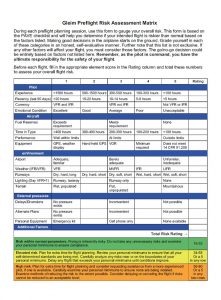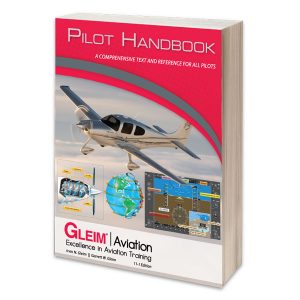 According to the 30th Joseph T. Nall Report, pilot-related accidents accounted for 65.5% of all general aviation accidents in 2018, of which 89 accidents were fatal. The FAA Risk Management handbook recognizes that flight training can be too heavily focused on just passing the written and practical tests, while ignoring safety principles and risk management. By actively incorporating risk management techniques in every flight lesson, aviation accidents can be mitigated by cultivating safer pilots who are aware of the potential risks, understand how to identify such risks, and are able to successfully manage risks in the aircraft.
According to the 30th Joseph T. Nall Report, pilot-related accidents accounted for 65.5% of all general aviation accidents in 2018, of which 89 accidents were fatal. The FAA Risk Management handbook recognizes that flight training can be too heavily focused on just passing the written and practical tests, while ignoring safety principles and risk management. By actively incorporating risk management techniques in every flight lesson, aviation accidents can be mitigated by cultivating safer pilots who are aware of the potential risks, understand how to identify such risks, and are able to successfully manage risks in the aircraft.
“All of life is the management of risk, not its elimination.” – Walter Wriston
The PAVE checklist is a common tool all pilots should utilize before embarking on a flight. The checklist helps to identify risk before departure and assists the pilot’s decision-making process. The elements of PAVE are:
- Pilot-in-Command,
- Aircraft,
- EnVironment, and
- External Pressures
By utilizing PAVE, pilots have a simple way to remember each category to examine for risk. Once a pilot identifies the risks of a flight, he or she needs to decide whether the risk, or combination of risks, can be managed safely and successfully. This can be done by first recognizing the pilot’s personal minimums – i.e. factors and conditions the pilot feels comfortable flying in. If these risks cannot be managed safely, often the best course of action will be to cancel the flight. The pilot should only continue with the flight if he or she has developed sufficient strategies to mitigate the risks.
 Gleim Preflight Risk Assessment Matrix
Gleim Preflight Risk Assessment Matrix
The Gleim Preflight Risk Assessment Matrix is a FREE resource developed by Gleim Aviation and is based on the PAVE checklist. You can download the matrix here. The matrix expands on the PAVE concept by incorporating various factors for each PAVE category. For example, the pilot category includes prompts on total pilot experience, recent experience, currency, and emotional condition. The pilot will self-assess and rate each factor from 1 to 5. The higher the number, the higher the risk for that particular factor.
After assessing each category, the pilot will tally up the score in the Total Risk Rating box. The Total Risk Rating will help the pilot determine if the intended flight is of low, medium, or high risk. All flights are risky; however, flights with a rating of medium or high risk should be delayed or canceled if the risks cannot be managed safely.
The goal of these checklists is to reduce the general aviation accident rate involving poor risk management. Pilots who make a habit of using risk management tools will have more pleasant flights that are less stressful for themselves and their passengers. As an incentive, some aircraft insurance companies will reduce insurance rates after a pilot completes a formal risk management training course. Ask your carrier for a list of applicable programs and discounts.
 Let’s make risk assessment a common habit in the aviation community by utilizing these tools and checklists so that every pilot is able to make the safest possible flight with the least amount of risk. Aside from the free Gleim Preflight Risk Assessment Matrix, more information about risk management can be found in Study Unit 6 of the Gleim Pilot Handbook.
Let’s make risk assessment a common habit in the aviation community by utilizing these tools and checklists so that every pilot is able to make the safest possible flight with the least amount of risk. Aside from the free Gleim Preflight Risk Assessment Matrix, more information about risk management can be found in Study Unit 6 of the Gleim Pilot Handbook.
Written by: Ryan Jeff, Aviation Research Assistant

